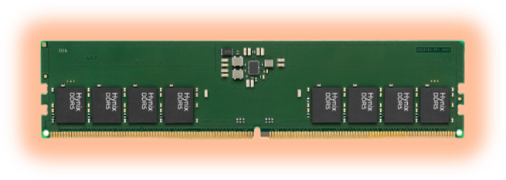Embedded MultiMediaCards (eMMCs) vs. Secure Digital (SD) Cards

Embedded MultiMediaCards (eMMCs) and Secure Digital (SD) cards have been key components in the memory industry for decades. Even though Universal Flash Storage (UFS) was introduced to the market more than ten years ago as a replacement, eMMC and SD/microSD cards are still widely used, and demand is forecast to rise steadily year over year, especially for long-life and mission-critical applications that depend on reliable and mature technologies.
Part of the same family
While eMMCs and SD cards are members of the same family of non-volatile memory components, they are not interchangeable. Both are NAND flash technologies, offering compact form factors and convenient storage capacity, and have an internal flash controller. One doesn’t outshine the other since each option has drawbacks and benefits suited for their primary applications. example, eMMCs have been a staple in mobile phones from the beginning, and as such, over the years, better adapted to serve as a traditional file processing system than SD cards, which were more used to store large files. Today, many industrial and automotive applications benefit from eMMC’s low power consumption, dependability, durability, and integration. To select the right component to meet the application’s storage needs, you have to understand the key differences between eMMCs and SD cards regarding capacity, endurance, form factor, and performance.
eMMC vs SD
One of the most apparent differences between the eMMC and SD card is that the eMMC is physically attached to the printed circuit board (PCB), while the SD card is removable. Once a component is soldered onto the motherboard, it is difficult to remove or replace it, making eMMCs more secure but repairs more difficult. On the other hand, because SD cards are removable, they can be easily replaced, updated, upgraded, and used to transfer stored data between devices. From a practical standpoint, whether or not it’s advantageous to remove the storage component is one determining factor when choosing between eMMC and SD. eMMCs are known to be more robust and durable than SD cards because they are embedded systems and because they can withstand more write cycles before failure. Storage in automotive, defense applications, telecom equipment, and industrial robotics often use integrated eMMCs, while in applications including home entertainment, medical, and other applications, using a removable SD memory card makes more sense.
The sequential and random read and write speeds of eMMCs are typically higher than for SD cards. However, depending on the performance classes and grade, SD cards can rival or even top eMMC read/write speeds. eMMCs have a bus of up to 8 bits wide and a parallel interface, while microSDs communicate standard over a 4-bit data bus. SD cards have a hybrid interface giving the host the possibility to operate it in SD (parallel) or serial peripheral interface (SPI) mode. Another important driver for selection is the component’s capacity. The variability in SD card specs makes it the preferred data storage component when flexibility is a must. eMMCs today reach about 512GB of storage capacity while SD cards have achieved 2TB.
Fit for the application
For procurement specialists and engineers, the first decision is to figure out what type of memory storage is required for the application they are working on. While eMMC and SD/microSD have a lot in common, some key differences cater to specific design and selection criteria. In general, eMMC beats microSD in speed and dependability, while SD/microSD cards are better suited when flexibility and expandability are desired. Both have small form factors and low power consumption. With our extended product Flash portfolio, SMARTsemi can help you select and source the eMMC or SD/microSD component for your needs.
SMARTsemi is your supply chain partner for DRAM components, eMMC solutions, and SD/microSD Flash Memory Cards for long-life applications. With 20+ years of industry experience, we understand your challenges and have aligned our priorities with yours to simplify your memory chip supply chain for the long run. We know what you need before you need it. Get a jump start and request a sample today.







